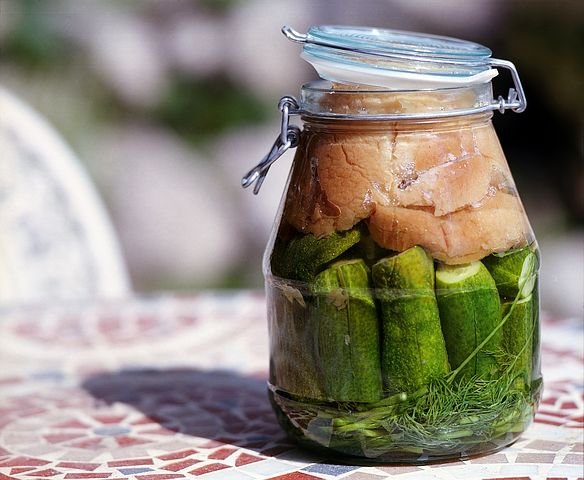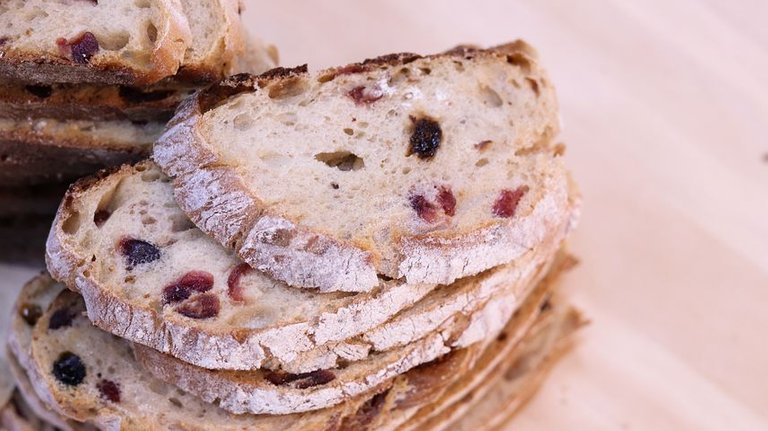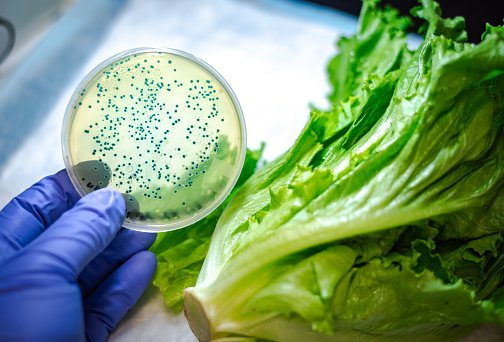IMPORTANT MICROORGANISMS IN FOODS.
Microorganisms inhabit our bodies and our environment. Therefore, it is not surprising to find many types of microorganisms ( yeasts, molds, viruses, bacteria and protozoa) in food. The major sources of foods are plants and animals and microorganisms can be transferred into our foods from the post - harvest stage. There are therefore related microorganisms occurring in foods which are also presents in plants and animals. Untreated foods contain various types of microorganisms and the major groups found in various foods in their natural state are bacteria, molds and yeasts.

[source] (https://pixabay.com/illustrations/bacteria-bug-microscopic-biology-1473469/)
Among the bacteria are Acetobacter, Alcaligenes, Proteus, Bacillus, Clostridium, Enterobacter, Escherichia, Pseudomonas, Staphylococcus, Streptococcus, Lactobacillus, Shigella, Salmonella, Micrococcus, Erwinia, Listeria, Leuconostoc, etc. The molds include Alternaria, Aspergillus, Botrytis, Cladosporium, Fusarium, Mucor, Penicillium, Rhizopus, Geotrichum, While yeasts associated with food are Brettanomyces, Candida, Torulopsis, Kloeckera, Saccharomyces, Schizosaccharomyces, Hansenula, Trichoporon, Debaromyces among others.
The significance of these organisms in foods like mentioned earlier is in two - fold:(i). Beneficial and (ii) Detrimental or Hazardous.
Some of these microorganisms enumerated produce useful enzymes that degrade complex food materials to simpler forms which are easily assimilated in the body. Of what use will the food you eat be to you and how can you exist or survive as a human being if you are unable to utilize or metabolize the food you eat?
In addition, some organisms in food have peculiar characteristics that enable them transform food from one form to a variety of other acceptable forms by means of fermentation, or even be consumed directly as foods example, edible fungi like mushrooms and yeasts.

[source] (https://pixabay.com/photos/fermented-cucumber-glass-food-1280682/)

[source] (
https://pixabay.com/photos/bakery-fermentation-new-german-bread-5325288/)
Fermented foods / Condiments and producing Microorganism.
Food = Bread, raw material =wheat, producing microorganism = Saccharomyces cerevisiae
Wine, raw material =Grapes, producing microorganism = Schizosaccharomyces pombe, Lactobacillus oeni
Beer, raw material =Barley producing microorganism =Saccharamyces pastorianus
Fermented milk, raw material =milk producing microorganism =Lactobacillus kefiri and yeast
Cocoa, raw material = Cocoa beans producing microorganism = Weisella ghanensis
Meat, raw material = Beef producing microorganism = Pediococcus spp.
Nono, raw material = Milk producing microorganism =Lactic acid bacteria
Cheese including ripening, raw material =Milk producing microorganism =Lactococcus lactis, Lactobacillus bulgaricus, Lactobacillus helveticus, Streptococcus thermophilus, Penicillium camemberti, Penicillium roqueforti, Kluyveromyces marxianus, Geotrichium candidum, Debaromyces hansenii.
On the other hand, some of the enzymes produced by microorganisms in food example. Pectic enzymes could breakdowns the plant tissues thereby causing deterioration of the food leading to possible spoilage and food loss. Also, the toxic metabolite of microorganisms in foods and presence of food pathogens can cause various illnesses to the consumer on consumption. People usually describe all food -related illnesses as 'food poisoning', which is strictly speaking incorrect. Food borne diseases are divided into food infection that is Illness resulting from consuming food that contains the live pathogens that multiply and invade the host tissues. And food intoxication this is illness due to consumption of food that contains toxics.
These toxins can be produced by microorganisms, occur naturally in the food example in certain mushroom. Or be a contaminant. The two most well known bacterial toxins are produce by Staphylococcus aureus and Clostridium botulinium. Certain toxins example mycotoxins which are produce by fungi have serious long - term effects even at small concentrations.
Common mycotoxins are aflatoxins this is carcinogens found in moldy nuts, ochratoxins causes kidney disease and are produced in cereals such as maize and barley and patulin that is associated with moldy apples. Most of this toxins are resistant to heat, so they are not eliminated by cooking, but proper cooking can prevent food borne infections. The bacteria causing most food infections are Salmonella, Campylobacter and Escherichia coli.
Some of the bacteria that cause food borne illnesses and symptoms of diseases are :-
1• Name of bacterium :- Bacillus cereus
Original source := soil
Risky foods := cooked rice and pasta; meat products; vegetables.
Time to develop := 1--5 hours
Symptoms := nausea, sickness and diarrhea.
2• Name of bacterium :- Campylobacter
Original source = raw meat and poultry
Risky foods = under cooked meat and poultry ; raw milk and cross contaminated food.
Time to develop = 3--5 days of eating infected food
Symptoms = fever severe pain and diarrhea.
3• Clostridium botulinium thou very rare.
Original source = soil
Risky foods = faulty processed canned meat and vegetables; cured meat and raw fish.
Time to develop = 1--7 days
Symptoms = affects vision, causes paralysis and can be fatal.
4• Escherichia coli E. coli O157: H7 is a very nasty strain and can be fatal.
Original source = the gut of all humans and animals.
Risky foods = contaminated water, milk, inadequately cooked meat, cross - contaminated foods.
Time to develop = 3--4 days.
Symptoms = inflammation, sickness and diarrhea.
5• Salmonella species
Original source = gut of birds and mammals including humans spread by faeces into water and food
Risky foods = poultry, eggs and raw eggs products, vegetables
Time to develop = 6--48 hours
Symptoms= diarrhea, sickness and headache.
6• Staphylococcus aureus
Original source = the skin and noses of animals and humans.
Risky foods = cured meat; milk products; un refrigerated, handled foods
Time to develop = 2--6 hours
Symptoms = sickness pain and some times diarrhea.
Microorganisms of interest in foods can therefore be grouped as spoilers. Spoilage organisms are those causing food deterioration and psychrotrophs are among the most important. Spoilage organisms cause undesirable changes in appearance, odur, texture, taste of the food and are usually grouped according to their activity or growth requirements as lipolytic, proteolytic, thermophilic, halophilic, and many more. Their actions can be controlled by applying methods of food preservation example is refrigeration, reduced water activity (aw), acidification. Examples of spoilers include Pseudomonas producing off odours in refrigerated raw meats, Leuconostoc producing slime in juices and Lactococcus producing acid in raw milk.
Often in food, microorganisms are referred to as "the good, the bad and the ugly" Good microorganisms are those that are used in the production of food example yoghurt, wine, beer. Or eaten as food as in yeasts, mushrooms, single cell proteins. Bad microorganisms cause spoilage, and the ugly microorganisms cause human illness.
Like earlier mention, food in its untreated form is never sterile. The actual danger lies in the potential of microbes to multiply in the food and cause either food poisoning or food spoilage.
Thank you for your time.
References.
Inyang, C. U and Aderemi, A. D. (2003) Bacteriological Assessment of Drinking water in Makurdi, Nigeria. *Journal of Agriculture, Science and Technology. 13: 136-140.
Montville, T. J, Matthew, K. D. R and Kniel, K. E (2012). Food Microbiology: An Introduction. 3rd Edition. ASM press Washington D. C
Ndubuisi - Nnaji, U.U., Adegoke, A. A., and Inyang, C. U. (2015). Health issues and food sustainability challenges in the Niger Delta Region, Nigeria.. *Journal of Multidisciplinary Scientific Research 3(5):10--16.
 [source] (
[source] (